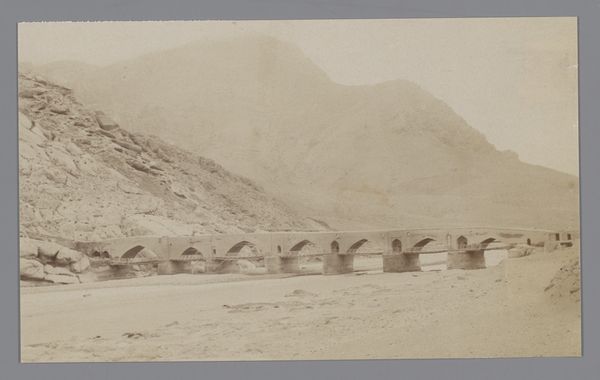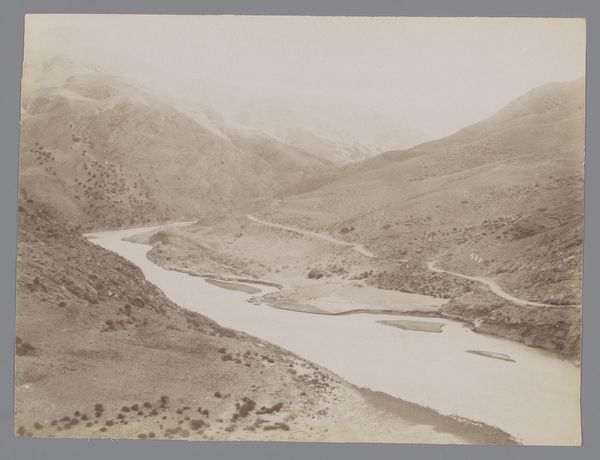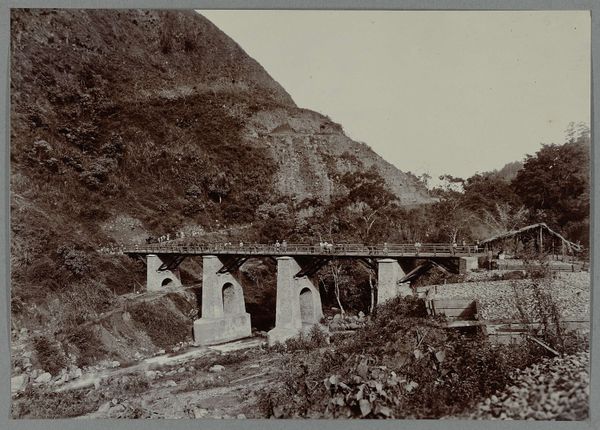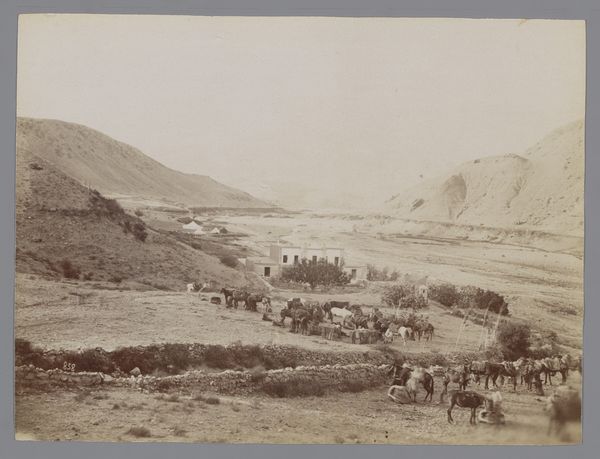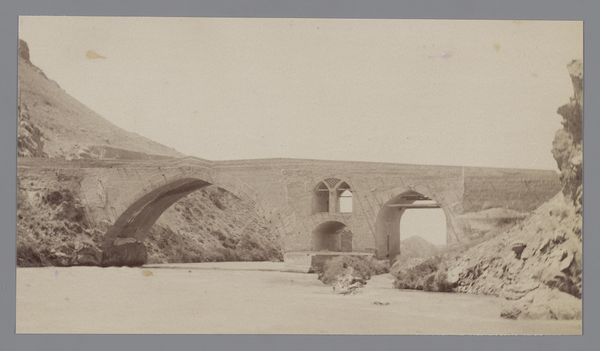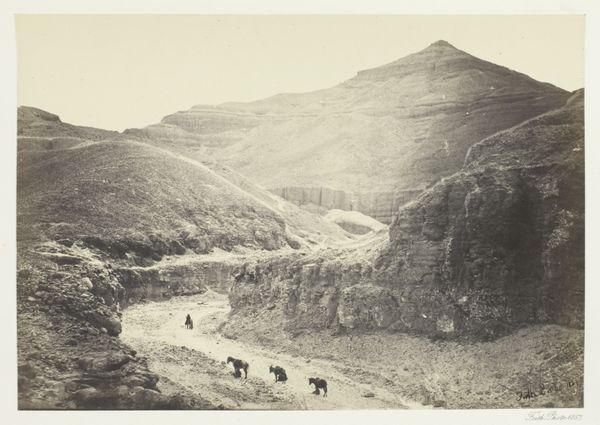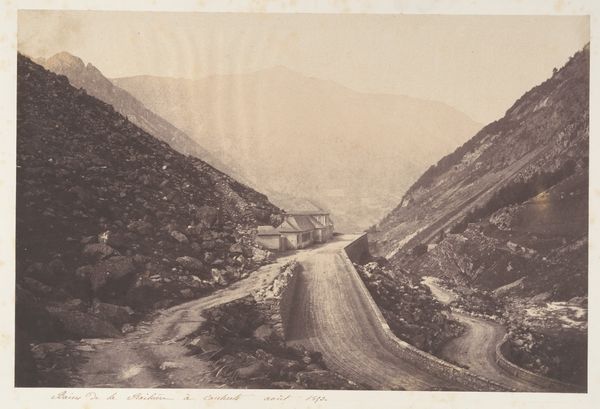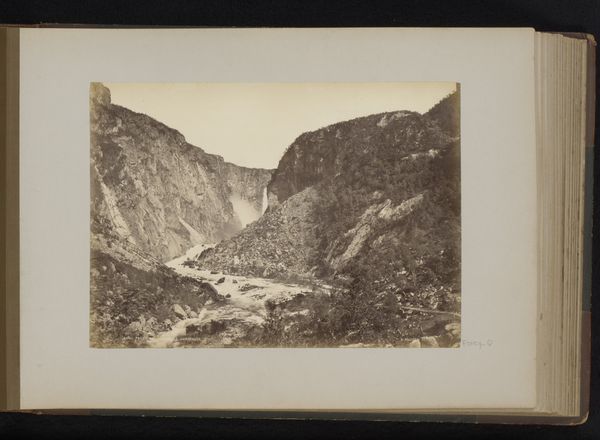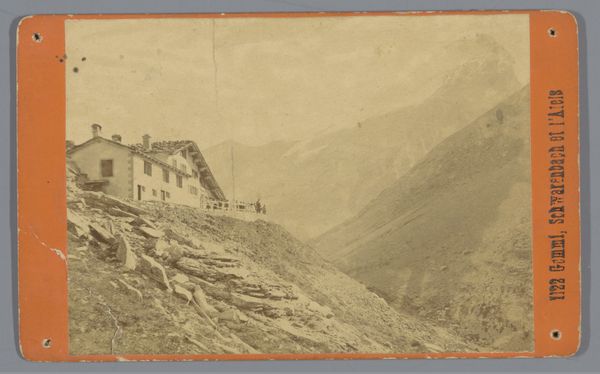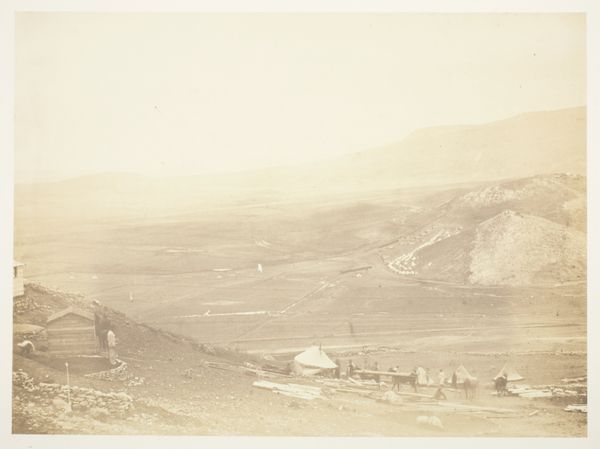![Landschap met een brug en een rivier met daarin een ruiter te paard en heuvels aan weerszijden ("La route de Rescht, Pont Kerezje [?]"), Iran by Antoine Sevruguin](/_next/image?url=https%3A%2F%2Fd2w8kbdekdi1gv.cloudfront.net%2FeyJidWNrZXQiOiAiYXJ0ZXJhLWltYWdlcy1idWNrZXQiLCAia2V5IjogImFydHdvcmtzLzA3ZWRlNjQwLTc5ZWMtNDUxNS1iZThjLWRkMTRkMzNjZTRhOS8wN2VkZTY0MC03OWVjLTQ1MTUtYmU4Yy1kZDE0ZDMzY2U0YTlfZnVsbC5qcGciLCAiZWRpdHMiOiB7InJlc2l6ZSI6IHsid2lkdGgiOiAxOTIwLCAiaGVpZ2h0IjogMTkyMCwgImZpdCI6ICJpbnNpZGUifX19&w=3840&q=75)
Landschap met een brug en een rivier met daarin een ruiter te paard en heuvels aan weerszijden ("La route de Rescht, Pont Kerezje [?]"), Iran c. 1880 - 1910
0:00
0:00
daguerreotype, photography
#
landscape
#
daguerreotype
#
photography
#
orientalism
Dimensions: height 154 mm, width 225 mm
Copyright: Rijks Museum: Open Domain
Editor: This is "Landschap met een brug en een rivier met daarin een ruiter te paard en heuvels aan weerszijden" – which translates to “Landscape with a bridge and a river with a horseman and hills on both sides” – believed to be from Iran around 1880-1910, by Antoine Sevruguin, using photography on a daguerreotype. The starkness of the image – that monochromatic rendering – and the somewhat stiff, posed figures make it feel incredibly staged, like a constructed reality. What strikes you about it? Curator: Well, the "staged" quality is key. Think about the social context: Photography at this time in Iran, by someone like Sevruguin, was not neutral documentation. He catered to Western audiences with particular fantasies about the ‘Orient.’ So, the materiality of this daguerreotype becomes intertwined with the creation and consumption of those desires. We need to consider how these landscapes are being produced and for whom. It's about the power dynamics inherent in representation. Editor: So, it’s not just a pretty picture of a bridge? Curator: Not at all! It’s a manufactured scene presented as "authentic." Consider the labor involved – from setting up the shot, paying the subject on horseback, the cost of the chemicals, and distribution. These material factors all point to an intricate network fueled by Western gaze, packaged and sold. Are we seeing Iran, or a product of Orientalist desires imposed onto it? Editor: I hadn't really thought about it that way, in terms of labor and distribution. It changes how I see the whole thing, now knowing it was consciously packaged. Curator: Exactly! Understanding the materials, the methods, and especially the economic motivations gives us insight that just looking at the composition cannot. The bridge becomes a prop in this manufactured narrative. Editor: I suppose I was focusing too much on just the aesthetic, missing all the material realities behind its creation. Thanks! Curator: No problem, seeing art through its material making can bring a new and insightful point of view!
Comments
No comments
Be the first to comment and join the conversation on the ultimate creative platform.
